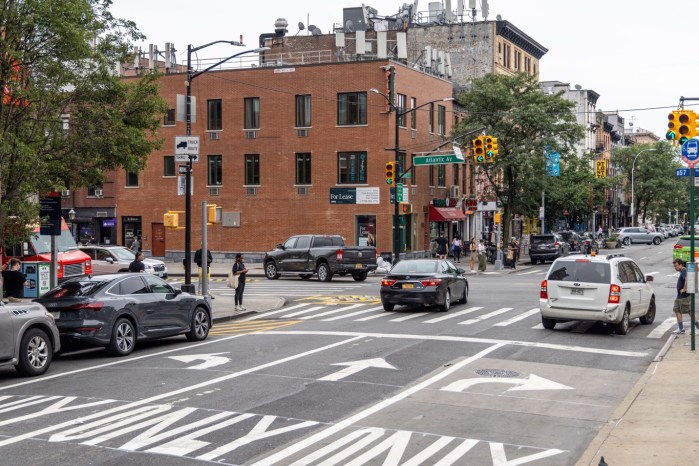The 250 geese and goslings that were massacred in Prospect Park in July were only the tip of the goose-berg, new documents reveal.
Federal agents rounded up a total of 1,676 geese from 19 locations in the city and Nassau County — apparently making last summer’s operation the largest intentional waterfowl extermination in city history.
The birds were thrown into crates and hauled to JFK Airport, where they were gassed, bagged, and discarded, according to documents obtained through a Freedom of Information request. The goose-filled Dumpsters were then hauled to an incinerator in Garden City.
In Prospect Park, the July 8 “culling” was done under cover of darkness — and the records indicate that officials knew their efforts would be controversial.
“JFK ops will also coordinate your arrival each day to avoid any unwanted attention,” Laura Francoeur, the chief wildlife biologist for the Port Authority, wrote in an e-mail explaining protocol for the operation.
Of course, unwanted attention is what the feds got after visitors to Prospect Park noticed that hundreds of molting geese and baby goslings had vanished overnight.
Within days, the truth was revealed: that the animals had been swept up in citywide operation meant to clear the skies of geese — the same waterfowl that caused the crash landing of a US Airways flight in the Hudson River in 2009.
That harrowing incident led federal officials to kill 1,235 geese from sites within five miles of both city airports that year.
But this summer, the radius was expanded to seven miles, though federal officials exceeded that distance when they corralled geese in Prospect Park.
City, state and federal officials insisted that the culling of the goose population — which had grown to around 25,000 in the city — was necessary to reduce risk to aircrafts.
But the wide array of government agencies involved likely did not comprehend the passion of many parkgoers for the Prospect Park waterfowl. Immediately after the culling, hundreds of Brooklynites were outraged, and organized a vigil in memory of the geese.
Later, it was revealed that city officials — concerned about issues of liability — had discussed the possibility of a 30-mile goose kill zone.
And recently Tupper Thomas, Prospect Park’s top administrator, confessed that she was aware that the goose massacre was imminent, but said nothing publicly because she felt it was not her place.
Despite all these revelations, the feds remain tight-lipped about the details of their goose eradication plan, which, records show, could encompass nearly the entire city.
All 19 locations visited by Wildlife Services agents last summer remain a mystery, but documents from the Port Authority — the agency managing the city’s airports — do reveal a few of the sites in addition to Prospect Park:
• In Nassau County, agents exterminated geese in Valley Stream and Hempstead Lake State Park.
• In Brooklyn, agents killed animals at the Fountain Avenue and Penn Avenue landfills.
• In Queens, agents slaughtered geese in Alley Pond Park, Little Neck Bay and Fort Totten.
• Animals on Rikers Island and Randall’s Island were also swept up in the culling.
Some saw the stunning scale of the goose massacre as evidence that the policy needed to change.
“It is certainly the largest waterfowl [massacre] we know of,” said Patrick Kwan, the New York State director of the Humane Society of the United States. “It’s an example of why we need transparency. For 1,600 geese to be killed without New Yorkers knowing what was going on or being able to consider alternatives … it’s not the most effective, efficient or humane method.”
But gassing is the method favored by the city — and it is possible that it will be expanded to include the Jamaica Bay Wildlife Refuge next year.
The chief of resource management at the Gateway National Recreation area, Dave Avrin, said a study was underway to determine how to control the goose population in the area. Previously, Jamaica Bay, which is part of a National Park, was off-limits to Wildlife Services.
“We are going through an Environmental Impact Statement at this time,” said Avrin. “One of the alternatives is to cull them next year, another is not. We’ll determine which one at the end of the process.”
























